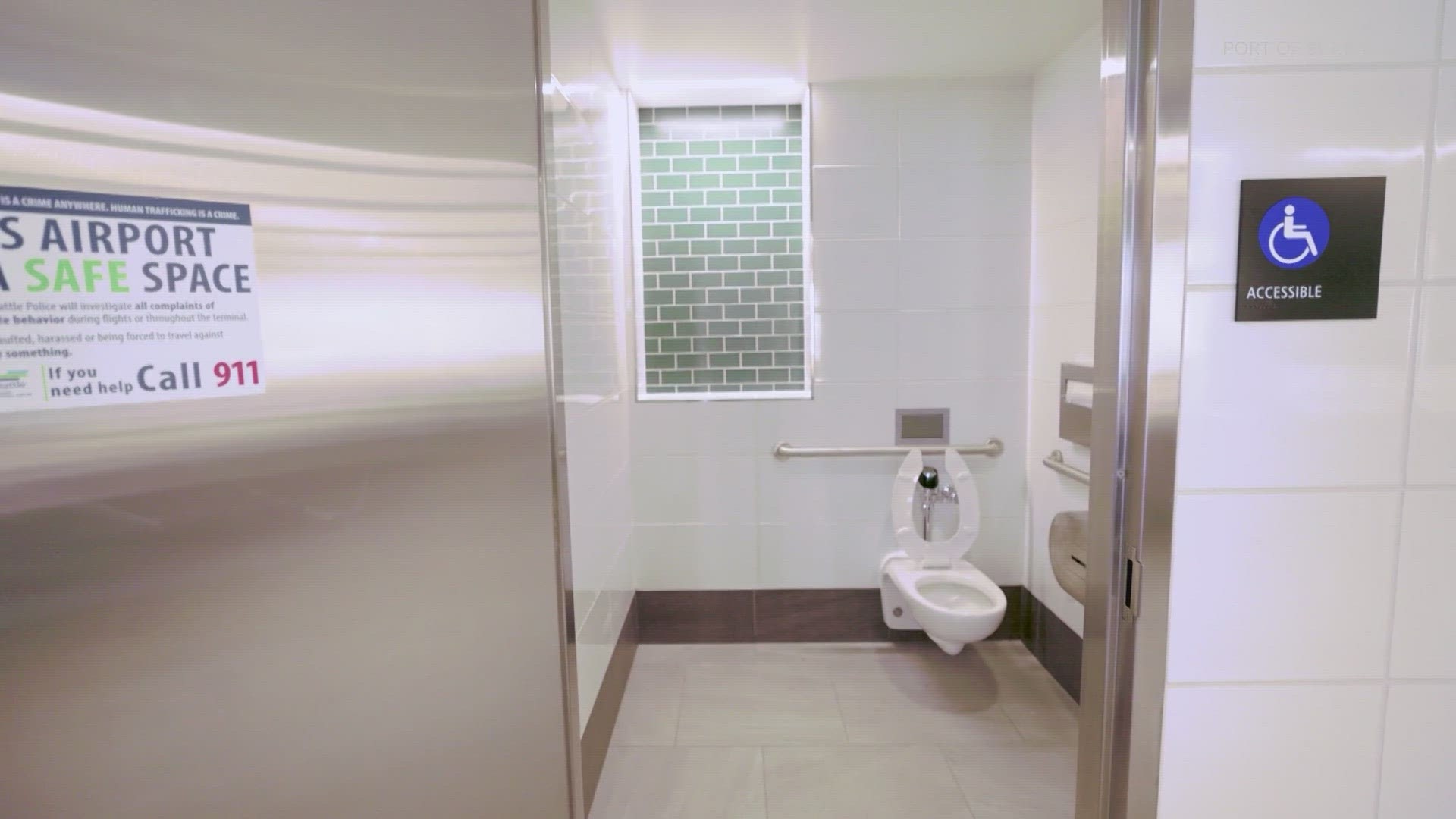SEATAC, Wash. — The first multi-user, all-gender restroom opened at Seattle-Tacoma International Airport on Thursday.
The restroom near Gate D2 makes Sea-Tac Airport one of approximately 10 in the country that has a multi-user restroom for all genders.
“This new all-gender restroom makes it clear that [Sea-Tac] is committed to being a welcoming space for travelers, no matter your gender identity,” said Port of Seattle Commissioner Ryan Calkins. “We want all guests at [Sea-Tac] Airport to know they have safe and accessible restroom options when traveling through our gateway. Additionally, the ADA-friendly and family-friendly spaces in this restroom make it a great option for families or those who need to assist or care for travel companions. Thank you to our project team and community partners that have worked tirelessly to create a space that is welcoming and meets the need of all travelers.”
The Port of Seattle consulted with local leaders during the design and implementation phase of the project. The goal, according to the Port's website, was to build a restroom that is inclusive and accessible to people of all "identities, abilities and circumstances."
The restroom includes:
- Full-height locking doors and walls frame each stall with no gaps to maintain privacy for every occupant
- Stalls that are 50% larger than code requirements and equipped with self-closing doors, storage hooks and shelves, and grab bars
- A shared handwashing station for all users
- Multiple baby changing tables
- Multiple vanity areas with full-length mirrors
- A separate, private urinal room
- A wheelchair-accessible family restroom that includes a toddler seat and changing table
There is also a salon-style art wall outside the restroom, featuring 22 artworks by 12 artists who are part of the LGBTQIA+ community.
Funding for the project came from a combination of an airport development fund, future revenue bonds and an FAA grant.

